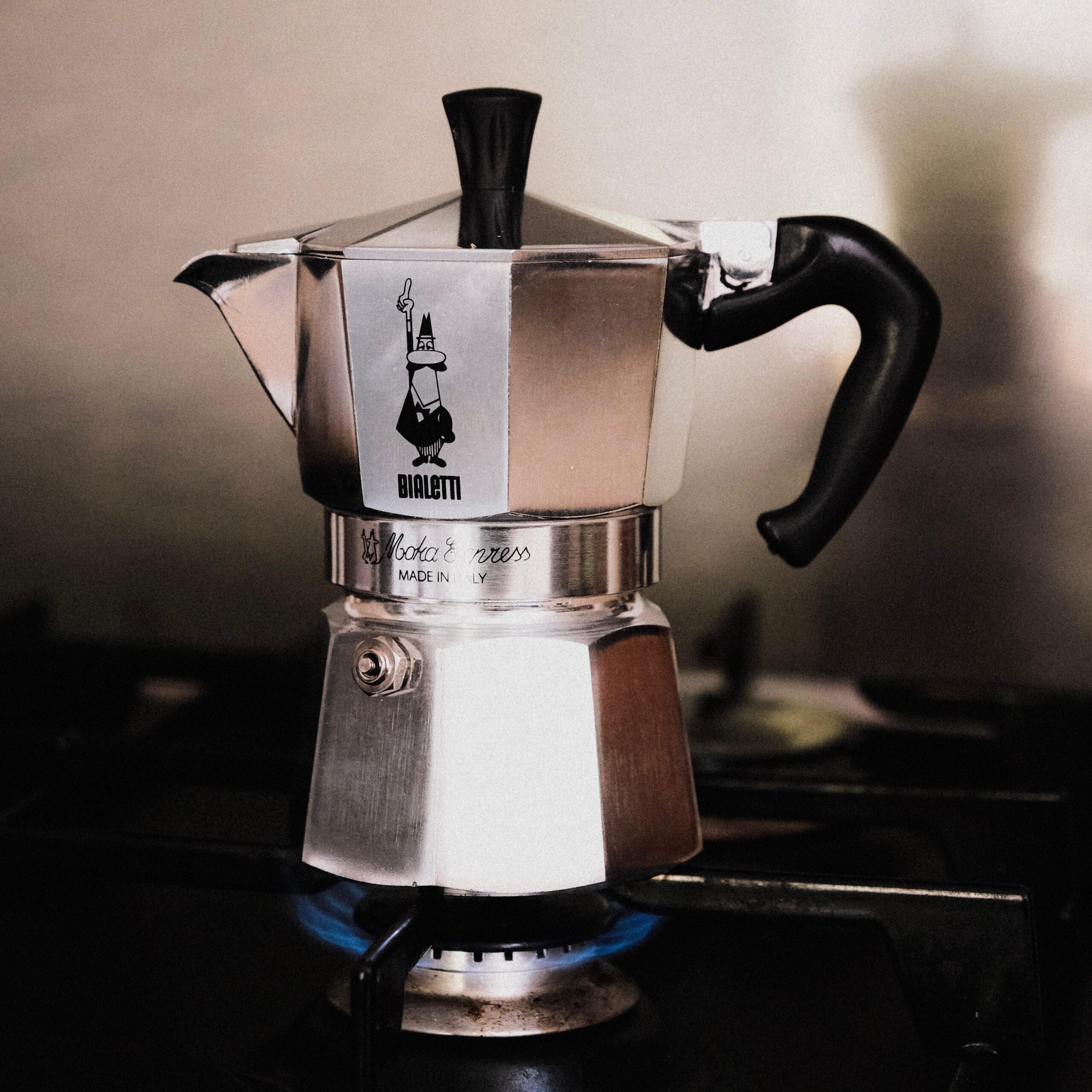If you’re a coffee connoisseur with a fondness for Cuban coffee, you might be wondering if a stovetop espresso maker can do the trick. You’re in luck! This article will explore whether you can use a stovetop espresso maker to make that rich and flavorful cup of Cuban coffee you crave. So, grab your coffee beans and let’s find out if this beloved kitchen appliance can unlock the taste of Cuba in your very own home.
What is Cuban coffee?
Definition of Cuban coffee
Cuban coffee, also known as cafecito or café cubano, is a type of espresso that originated in Cuba. It is a strong and robust coffee that is made using a specific brewing method and often enjoyed with added sugar to create a unique layer of foam called espuma or crema. Cuban coffee is traditionally served in small cups known as demitasse cups and is an integral part of Cuban culture and social gatherings.
Ingredients of Cuban coffee
The key ingredients for making Cuban coffee are:
-
Coffee beans: A dark roast coffee bean is often preferred for its rich and bold flavor. It is crucial to choose high-quality coffee beans for the best results.
-
Sugar: Traditional Cuban coffee is made with granulated sugar, which is used to create the signature espuma or crema. The amount of sugar can vary depending on personal preference, but typically, 1 to 2 teaspoons of sugar are used per cup of coffee.
-
Water: Good quality, filtered water is essential for brewing a delicious cup of Cuban coffee. The water should be heated to just below boiling point for optimal extraction.
Traditional way of making Cuban coffee
The traditional method of making Cuban coffee involves using a stovetop espresso maker or a “cafetera,” which is a small, metal, three-chambered coffee pot. The coffee grounds are placed in the middle chamber, and water is boiled in the bottom chamber. As the water heats up, it creates steam, which forces the hot water through the coffee grounds and into the top chamber, resulting in a concentrated espresso-like beverage. Sugar is added to the brewed coffee to create the espuma or crema, which is achieved by vigorously stirring the sugar into the coffee until it forms a frothy layer on top.
What is a stovetop espresso maker?
Definition of a stovetop espresso maker
A stovetop espresso maker, also known as a Moka pot, is a popular coffee brewing device that is commonly used in households to make espresso-like coffee. It consists of three main parts: a bottom chamber for water, a middle chamber for coffee grounds, and a top chamber for the brewed coffee. The stovetop espresso maker works by creating pressure from the heat generated on the stovetop, which forces the water through the coffee grounds and into the top chamber, resulting in a strong and flavorful cup of coffee.
How does a stovetop espresso maker work?
A stovetop espresso maker operates on the principle of steam pressure and gravity. Here’s how it works:
- Water is poured into the bottom chamber of the stovetop espresso maker.
- The coffee grounds are placed in the middle chamber, which is a perforated filter basket.
- The top chamber is screwed onto the bottom chamber, creating a sealed unit.
- The stovetop espresso maker is placed on a heat source, such as a stovetop burner.
- As the water heats up, it creates steam, which builds pressure inside the bottom chamber.
- The pressure forces the hot water through the coffee grounds in the middle chamber.
- The brewed coffee then rises through a central tube and collects in the top chamber.
- Once the brewing is complete, the stovetop espresso maker is removed from the heat source, and the coffee is ready to be poured and enjoyed.
Similarities and differences between Cuban coffee and espresso
Similarities between Cuban coffee and espresso
Cuban coffee and espresso have several similarities, including:
- Strong flavor: Both Cuban coffee and espresso are known for their bold and intense flavor profiles. They are typically more concentrated and have a higher caffeine content compared to regular drip coffee.
- Small serving size: Both Cuban coffee and espresso are traditionally served in small cups, usually referred to as demitasse cups. These smaller portions allow the drinker to savor the strong flavors without dilution.
- Rich and robust body: Both Cuban coffee and espresso have a thick and velvety texture, which is often attributed to the brewing method and the use of finely ground coffee.
Differences between Cuban coffee and espresso
While Cuban coffee and espresso share some similarities, there are also distinct differences between the two:
- Brewing method: Cuban coffee is typically made using a stovetop espresso maker or a cafetera, while espresso is brewed using a specialized espresso machine. The brewing process and equipment used can result in slight variations in taste and texture.
- Sugar addition: Sugar is an essential element of Cuban coffee, where it is added during the brewing process to create the espuma or crema. In contrast, traditional espresso does not include the addition of sugar during the brewing process.
- Cultural context: Cuban coffee holds significant cultural importance in Cuba and is often enjoyed as a social and communal activity. Espresso, on the other hand, has a broader cultural presence and is enjoyed worldwide in various settings, such as coffee shops and homes.
Can a stovetop espresso maker make Cuban coffee?
Compatibility of stovetop espresso maker with Cuban coffee
Yes, a stovetop espresso maker can be used to make Cuban coffee. The basic principles of brewing coffee in a stovetop espresso maker align with the traditional method of making Cuban coffee. The stovetop espresso maker allows for the extraction of bold flavors and concentrates the coffee, making it an ideal tool for brewing Cuban coffee at home.
Benefits and limitations of using a stovetop espresso maker for Cuban coffee
Using a stovetop espresso maker for Cuban coffee offers several benefits:
- Affordability and accessibility: Stovetop espresso makers are relatively inexpensive compared to specialized espresso machines. They are also widely available, making them easily accessible for home use.
- Portability: Stovetop espresso makers are compact and portable, making them convenient for travel or use in different locations.
- Versatility: Stovetop espresso makers can brew a variety of coffee beverages, including Cuban coffee. They offer flexibility in terms of coffee strength and customization.
However, it is important to acknowledge some limitations when using a stovetop espresso maker for Cuban coffee:
- Lack of pressure control: Unlike specialized espresso machines, stovetop espresso makers do not provide precise control over the brewing pressure. This can result in variations in the extraction and potentially affect the quality of the coffee.
- Espuma creation: While a stovetop espresso maker can produce a concentrated coffee similar to espresso, creating the desired espuma or crema solely through the brewing process may be challenging. Additional steps may be required to achieve the characteristic foam layer.
Despite these limitations, using a stovetop espresso maker is a feasible and accessible option for brewing Cuban coffee at home.
Steps to make Cuban coffee with a stovetop espresso maker
Step 1: Grinding the coffee beans
Start by selecting high-quality coffee beans and grinding them to a fine consistency. Cuban coffee requires a finely ground coffee to maximize flavor extraction during the brewing process. Aim for a consistency similar to table salt.
Step 2: Preparing the stovetop espresso maker
Disassemble the stovetop espresso maker by unscrewing the top and removing the coffee grounds filter basket. Clean the components thoroughly to remove any residue from previous use.
Step 3: Filling the stovetop espresso maker with water
Fill the bottom chamber of the stovetop espresso maker with cold, filtered water. Ensure the water level does not exceed the safety release valve.
Step 4: Adding the coffee grounds
Place the freshly ground coffee into the filter basket, filling it evenly without packing it too tightly. Level the coffee surface, ensuring it does not touch the edges to avoid hindering the sealing process.
Step 5: Assembling the stovetop espresso maker
Reassemble the stovetop espresso maker by screwing the top chamber onto the bottom chamber securely. Be careful not to overtighten, as this can make it difficult to separate the chambers after brewing.
Step 6: Brewing the coffee
Place the stovetop espresso maker on a stovetop burner set to medium heat. Allow the water to heat up gradually, and watch for the brewed coffee to start collecting in the top chamber. This process usually takes a few minutes.
Step 7: Adding sugar to create the espuma (crema)
Once the coffee is brewed, remove the stovetop espresso maker from the heat source. Quickly stir in 1 to 2 teaspoons of sugar per cup into the brewed coffee until it dissolves completely. Stirring vigorously helps create the desired espuma or crema.
Step 8: Pouring and serving the Cuban coffee
Carefully pour the Cuban coffee into small demitasse cups, dividing it equally among servings. Serve immediately while it is hot, savoring the rich flavors and the layer of foam on top.
Tips for making the perfect Cuban coffee with a stovetop espresso maker
Choosing the right coffee beans
Opt for a dark roast coffee bean to achieve the characteristic strong flavor of Cuban coffee. Look for beans labeled specifically for espresso or Cuban coffee to ensure the best results.
Grinding the coffee beans to the right consistency
Grind the coffee beans to a fine consistency, similar to table salt. Ensure a uniform grind size to facilitate optimal extraction during the brewing process.
Using the right water-to-coffee ratio
Maintain a ratio of approximately 1:1 between water and coffee grounds. Adjust the amount according to personal preference, but avoid overfilling the stovetop espresso maker, as this can lead to overflow and affect the extraction process.
Ensuring proper brewing time
Monitor the brewing process closely to avoid over-extraction or under-extraction of the coffee. The brewing time typically ranges between 3 to 5 minutes, depending on the stovetop espresso maker and heat source.
Adding the right amount of sugar for the espuma
Experiment with the amount of sugar used to create the desired level of sweetness and foam. Start with 1 to 2 teaspoons of sugar per cup and adjust according to taste preference.
Alternative methods of making Cuban coffee
Using a Moka pot
Similar to a stovetop espresso maker, a Moka pot can be used to brew Cuban coffee. It operates using the same principles of steam pressure but differs in design and brewing capacity. Follow the same steps as mentioned earlier, adapting them to the specific instructions of the Moka pot.
Using a French press
While a French press is traditionally used for brewing drip-style coffee, it can also be used to make Cuban coffee. The process involves steeping the coffee grounds in hot water for a few minutes and then pressing down the plunger to separate the brewed coffee from the grounds.
Using an espresso machine
Although not the traditional method, an espresso machine can also produce a flavorful cup of Cuban coffee. Simply use finely ground coffee beans and follow the instructions provided by the espresso machine manufacturer.
Common mistakes to avoid when making Cuban coffee with a stovetop espresso maker
Using the wrong coffee beans
Choosing the wrong type of coffee bean can result in a flavor profile that deviates from the authentic Cuban coffee taste. Opt for a dark roast espresso blend or specifically labeled Cuban coffee beans.
Overfilling the stovetop espresso maker
Adding too much water or coffee grounds to the stovetop espresso maker can lead to overflowing and inconsistent brewing. Follow the recommended water-to-coffee ratio and avoid exceeding the maximum fill level.
Not allowing enough brewing time
Rushing the brewing process can result in under-extracted coffee with a weak flavor. Ensure sufficient brewing time to allow the flavors to develop fully and achieve the desired strength.
Not adding sugar for the espuma
Sugar plays a crucial role in creating the characteristic foam layer of Cuban coffee. Skipping the addition of sugar can result in a lack of depth and complexity in the flavor profile.
Final thoughts
The versatility of stovetop espresso makers
Stovetop espresso makers offer a versatile and accessible brewing method for making Cuban coffee. They provide coffee enthusiasts with the ability to enjoy a strong, flavorful cup of coffee without relying on specialized equipment. Whether at home or on the go, stovetop espresso makers can be relied upon to deliver a satisfying experience.
Enjoying the rich flavors of Cuban coffee with a stovetop espresso maker
By following the steps outlined in this article and incorporating the recommended tips, you can confidently brew delicious Cuban coffee using a stovetop espresso maker. Embrace the bold flavors, the aromas, and the cultural significance of this beloved beverage. Whether you prefer it strong and black or with a dash of sugar for the espuma, sipping Cuban coffee is a delightful experience that can transport you to the vibrant streets of Cuba. So, grab your stovetop espresso maker, some high-quality coffee beans, and indulge in the rich flavors of Cuban coffee. Salud!




